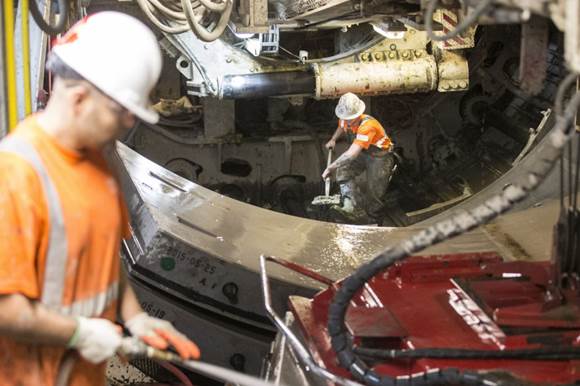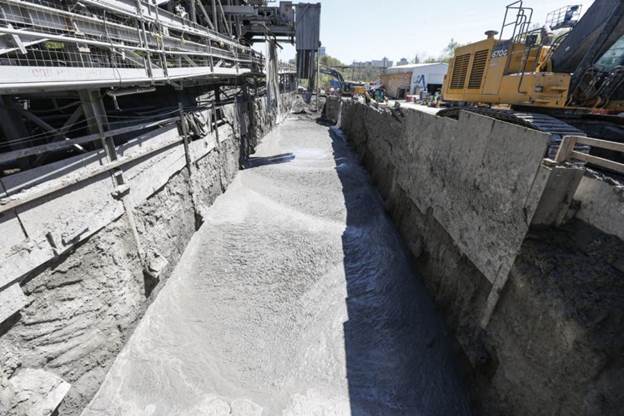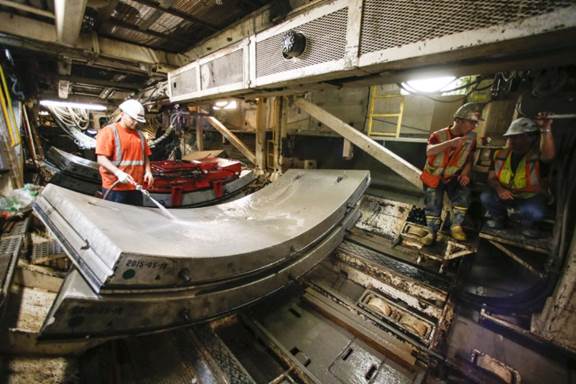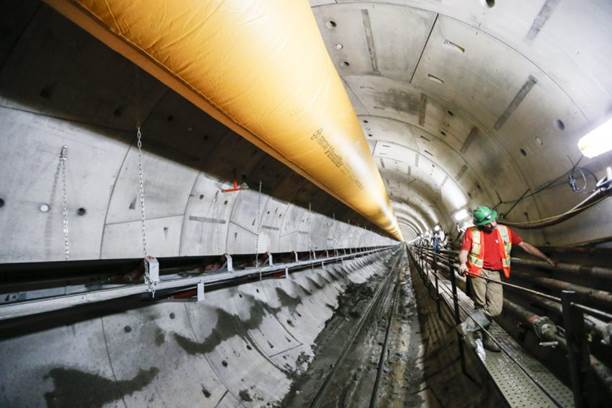
Tunnelling beneath Eglinton Ave. for the Crosstown LRT
The Star took a rare trip Tuesday down into the unfinished Eglinton Crosstown tunnel.
thestar.com
By Ben Spurr
May 17, 2016

Beneath Eglinton Ave., Toronto’s biggest transit project in a generation is rumbling ahead, metre by metre. The Star took a rare trip down the unfinished Eglinton Crosstown tunnel, with the project’s lead, John Brown, to check on the LRT line’s progress.
Long way down

One peek over the edge of the launch shaft for the eastern underground section of the Crosstown illustrates the massive scale of the $5.3-billion project. The western underground portion of the RT line was completed earlier this month, while two tunnel boring machines (nicknamed Don and Humber) entered the eastern launch shaft at Brentcliffe Rd. last September. They’re expected to complete the westward journey to Yonge this year.
All aboard!

Passengers will eventually travel the Crosstown’s 19-km route (10 km of it underground) in sleek light-rail vehicles built by Bombardier. But for the moment a workmanlike 30-ton diesel locomotive transports workers and construction supplies in and out of the tunnels below the surface. It takes almost 10 minutes to travel the 1,700 metres to where the boring machines are doing their work.
Cutting edge cutter
The tunnel boring machine Don is barely visible here behind its supporting machinery. But Brown, likens the borer to “an earth submarine.” As it eats through the earth, crews use a computer-guided device called a vacuum erector to lift and fit the concrete segments along the inside of the borer’s circular frame. As the machine moves forward the rings of concrete are left behind, grouted into place.
Much muck

To ensure that the soil the boring machines digs into is always the same consistency, crews inject it with a conditioner that transforms it into a wet muck. “What you want to get is the consistency of, say, toothpaste. . . which means it’s easier to handle,” says Brown. The muck is carried to the surface on a long conveyor belt and dumped into this pit. Each night, up to 80 dump trucks worth of the sludge is carted off to GTA landfills.
Put a ring on it

The concrete tunnel segments are cast in Barrie and trucked to the Crosstown site, where they’re lowered into the launch shaft by a crane. Each segment is exactly 1.5 metres wide, and it takes six of them to make a single ring of tunnel. Crews working 24 hours a day, five days a week are able to build an average of about 10 to 15 metres of tunnel each day.
Five years to go

Building the tunnel is just one phase of the Crosstown project. Once it’s done, the boring machines and the infrastructure that supports them - including the yellow ventilation tube, muck conveyer belt, power lines, and locomotive track seen here - will be removed so that the LRT track and signal systems can be installed. Parts of the tunnel will also be opened up to build stations. The line is expected to be in service in 2021.
